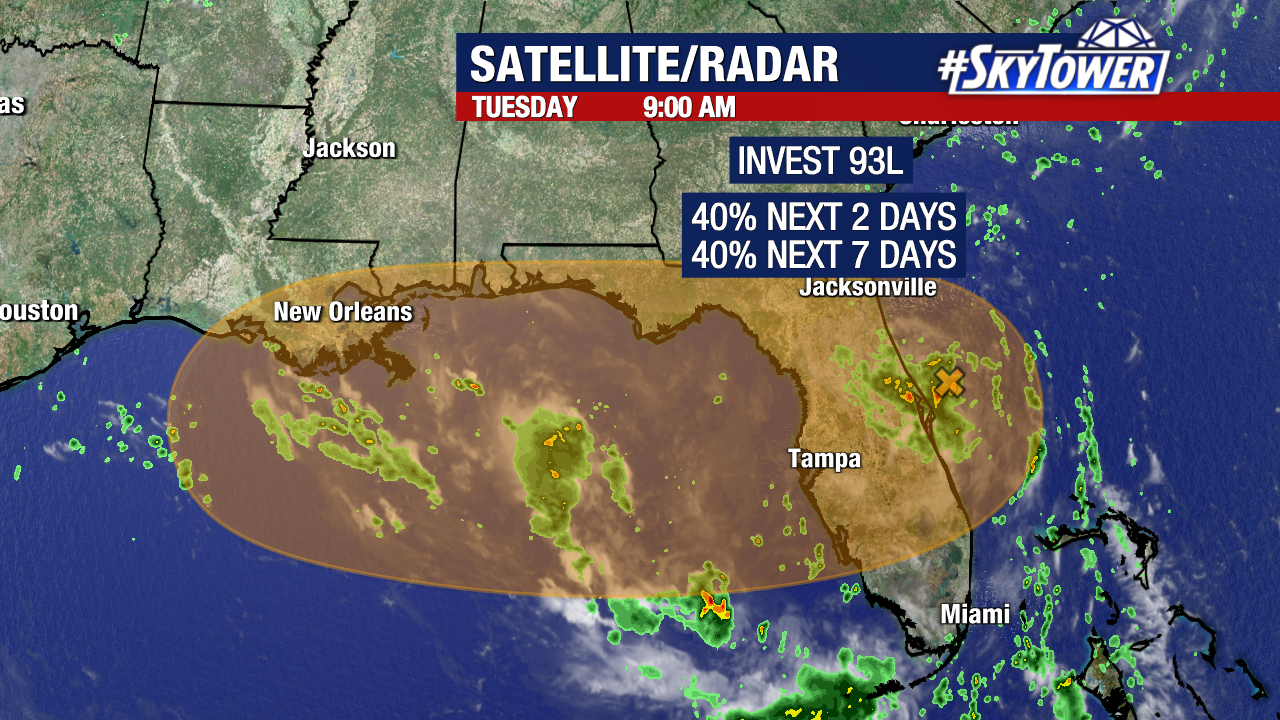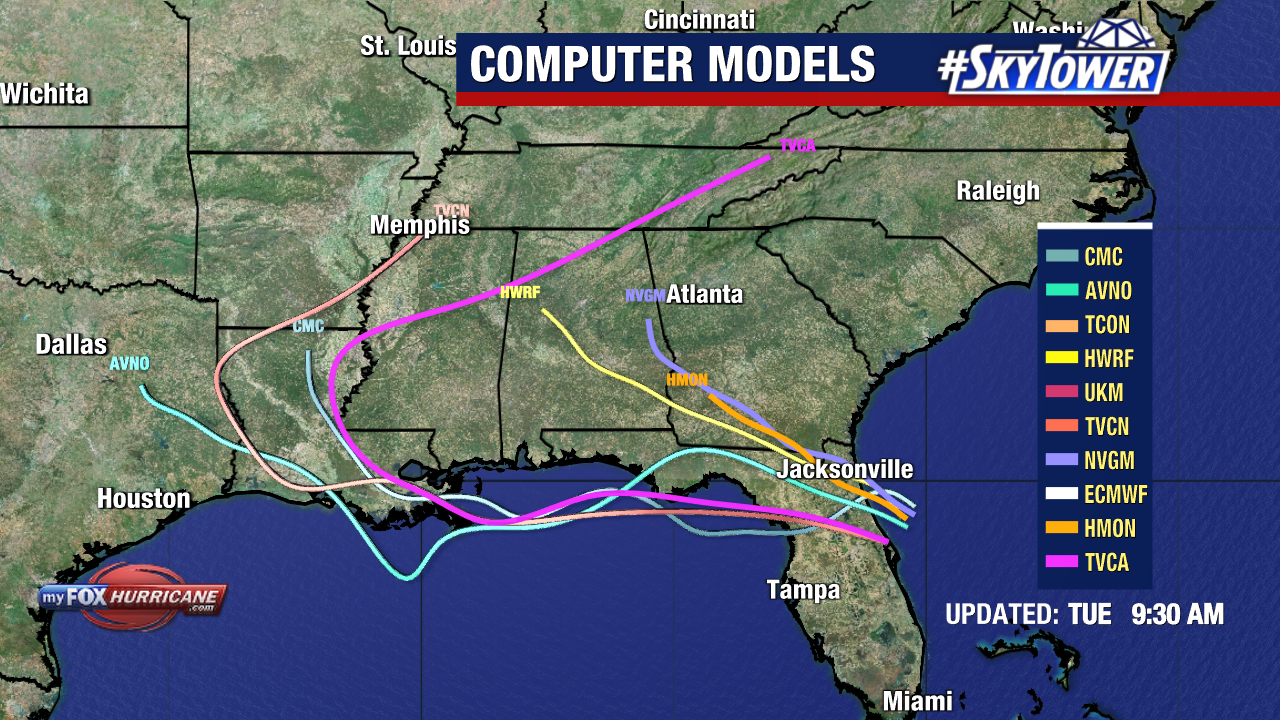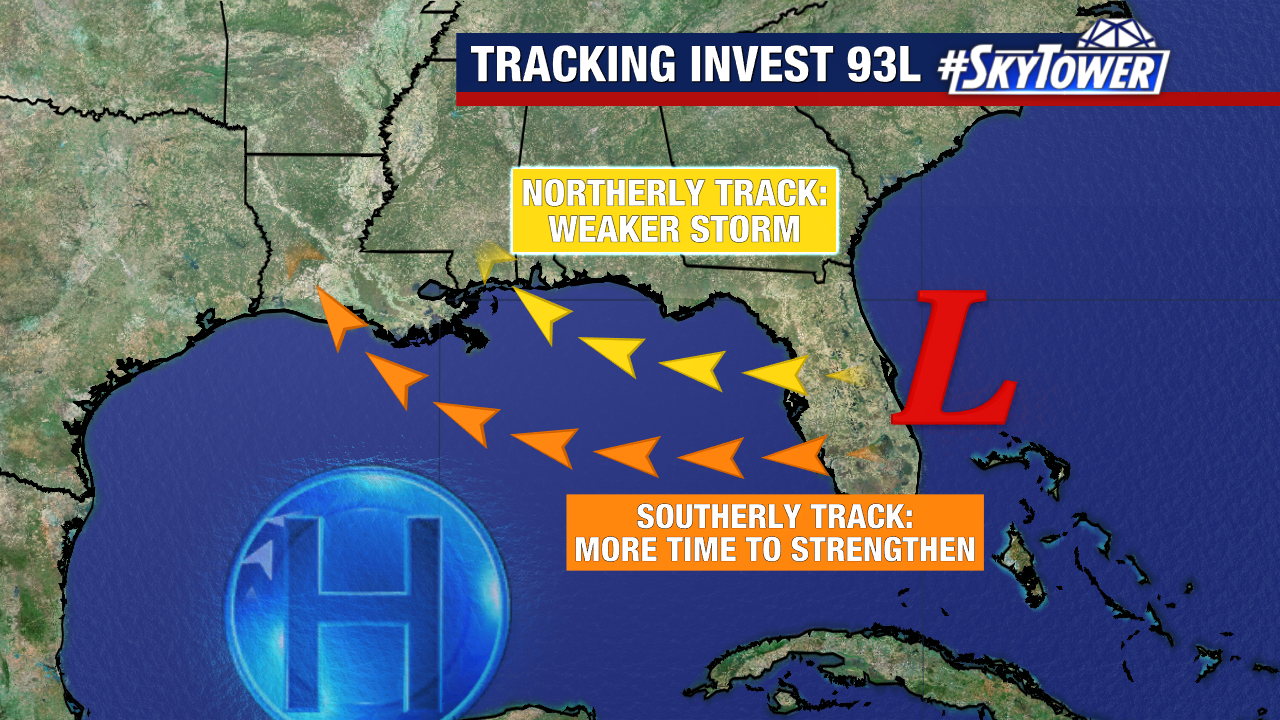Right on cue with the start of August, the tropics are showing signs of life with a few areas we’re watching in the Atlantic Basin.
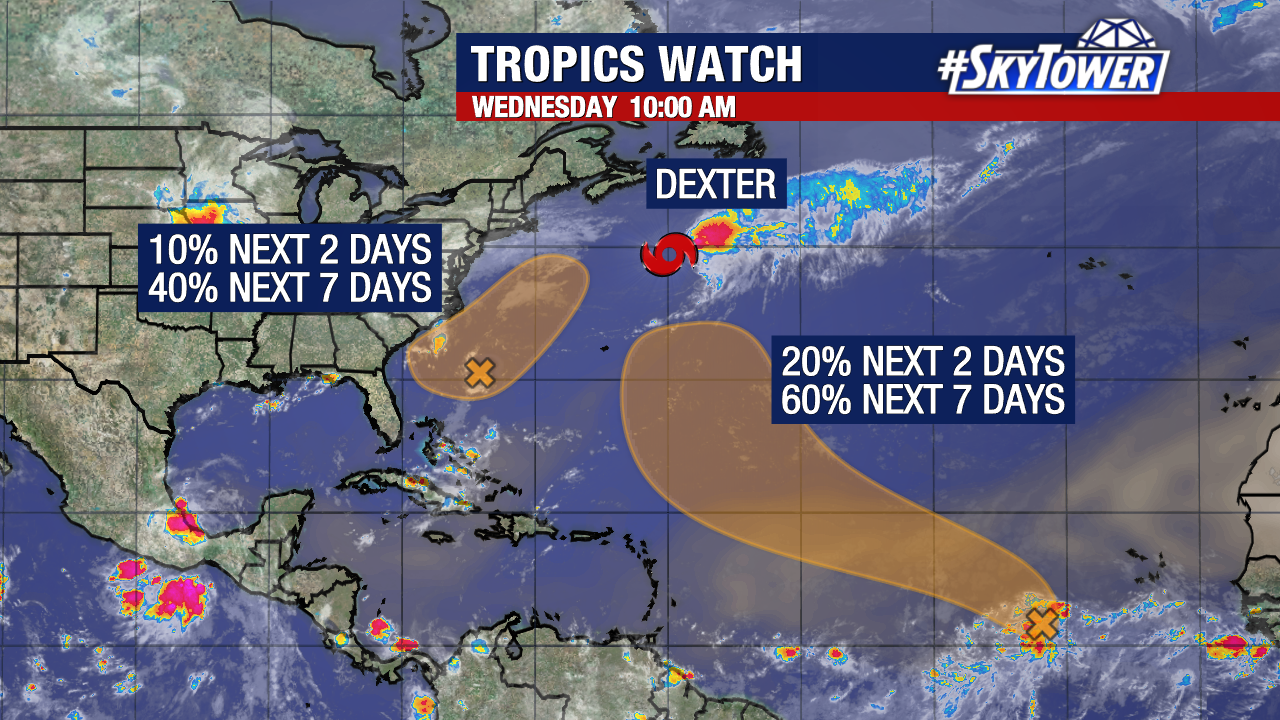
One is several hundred miles off the SE coast, where an area of low pressure is expected to form in the next few days along a stationary boundary. This is actually the same front that helped spin up Dexter earlier this week.
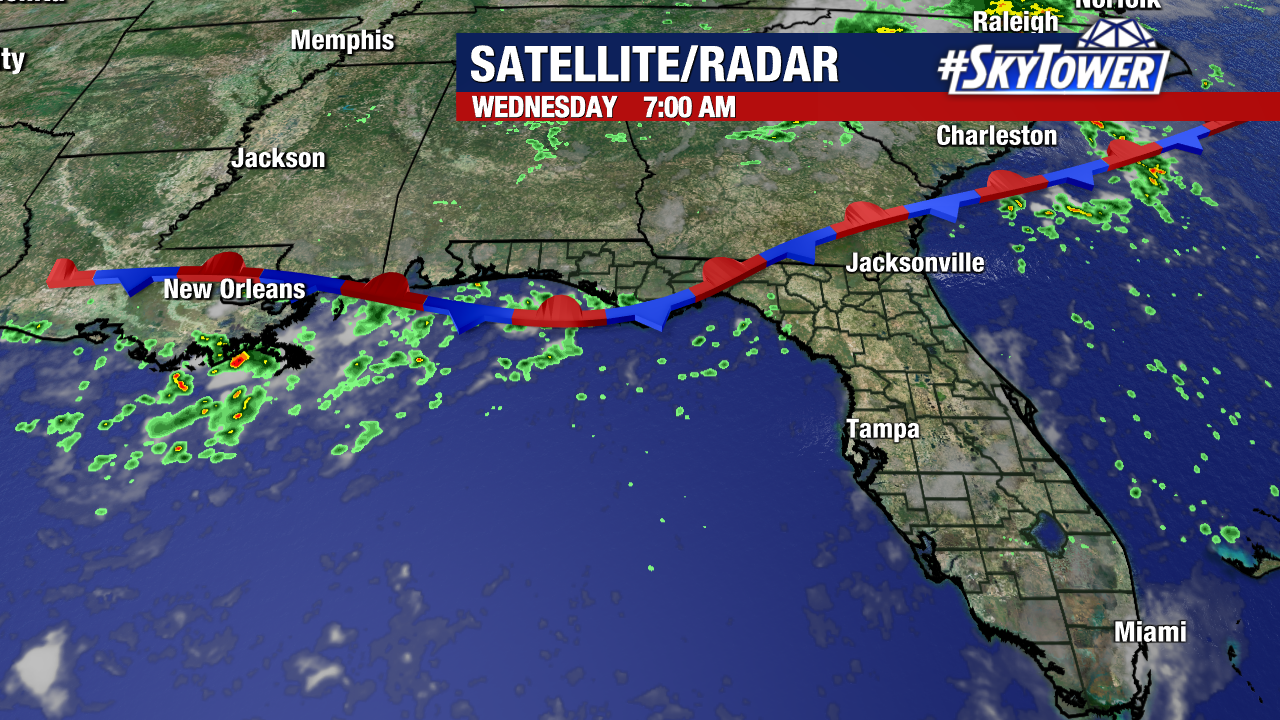
There is a 10% chance of development in the next 2 days and 40% chance in the next 7 days. A tropical depression could form as the low drifts west then northwest.
Model trends lean towards low pressure forming offshore of South Carolina then drifting toward the North Carolina coast into this weekend.
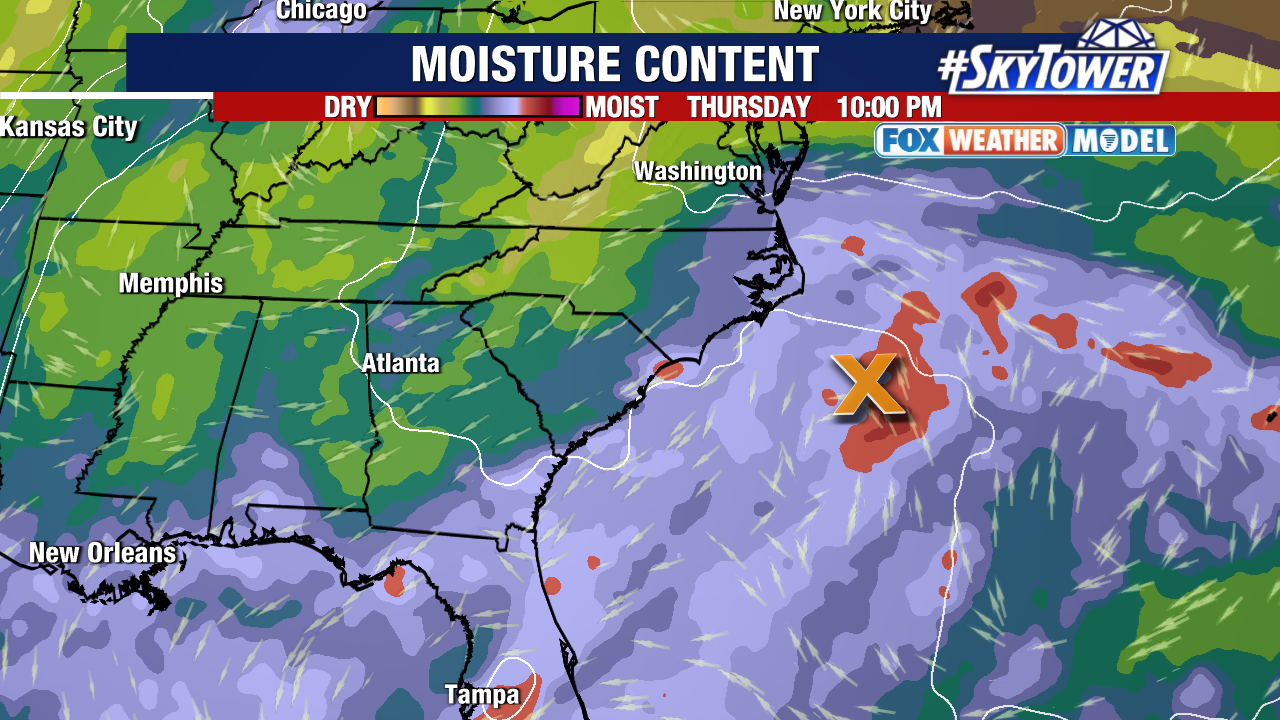
Tropical downpours and an unsettled pattern will be in place from Florida to the Carolinas through the weekend.
Hurricane Hunters are set to fly there later this morning to gather the latest data on the disturbed area.

Water temperatures are plenty warm in this region of the Atlantic with mid 80s in some spots.
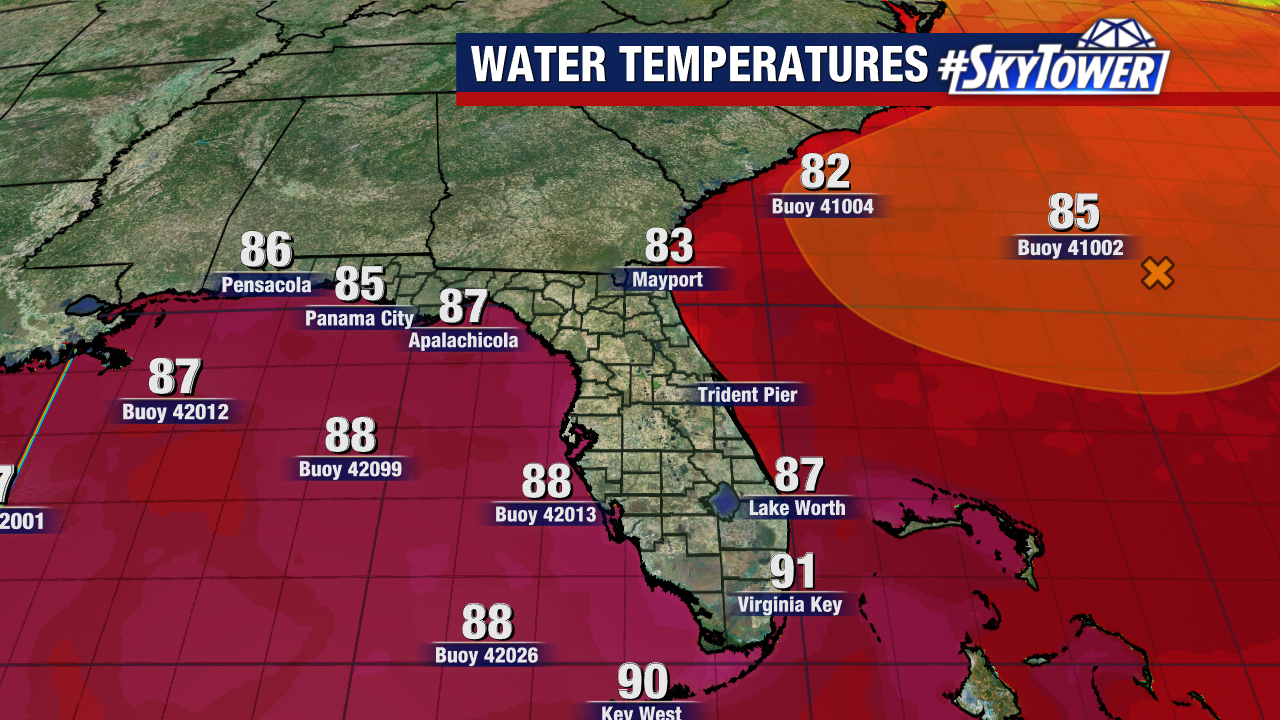
Meanwhile, a mid-level disturbance is expected to spin up near the Bahamas and South Florida late this week. This will drag tropical moisture across Florida as the area slowly moves north through the weekend.
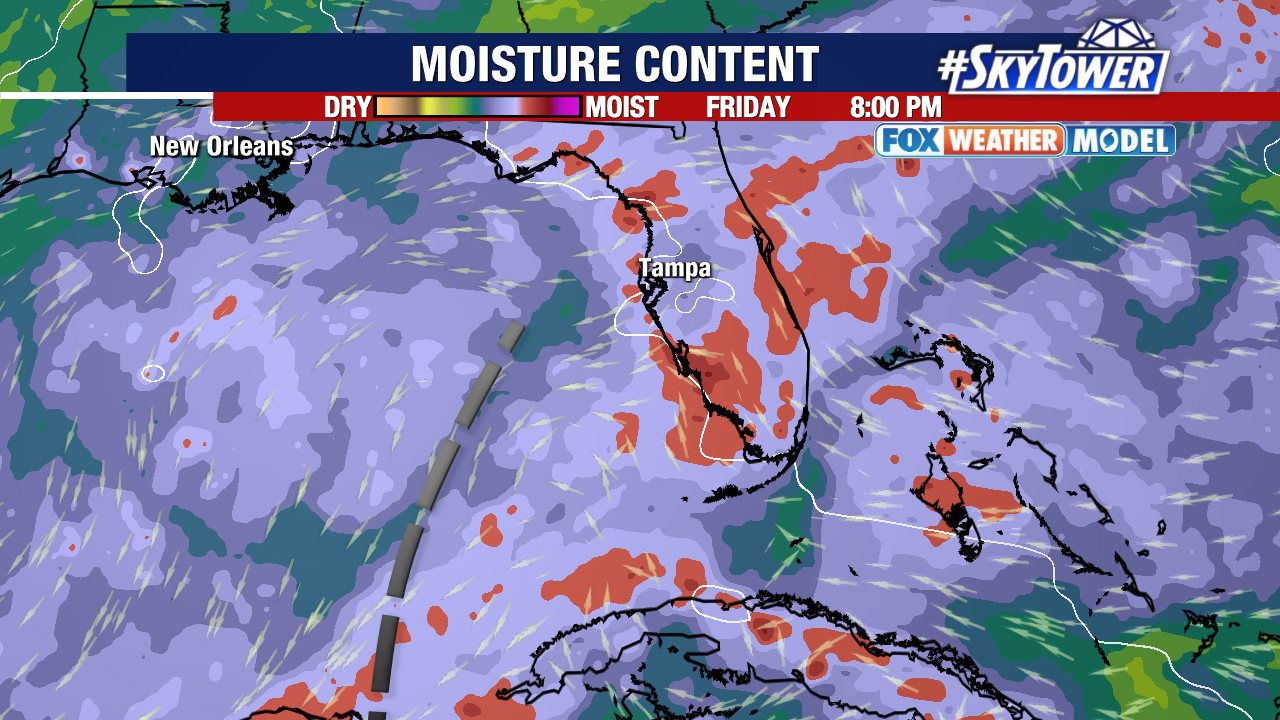
This could try to organize in the Gulf next week but at this point, it looks to be a rainmaker more than anything as it drags more deep tropical moisture across the state.
Tropical Storm Dexter continues to move ENE through the Atlantic with no direct impacts to land as it passes north of the Azores. High surf and dangerous rip currents continue across the East Coast as it move away.

The average date our E named storm forms is August 22. The first hurricane of the season forms Aug 11 on average.
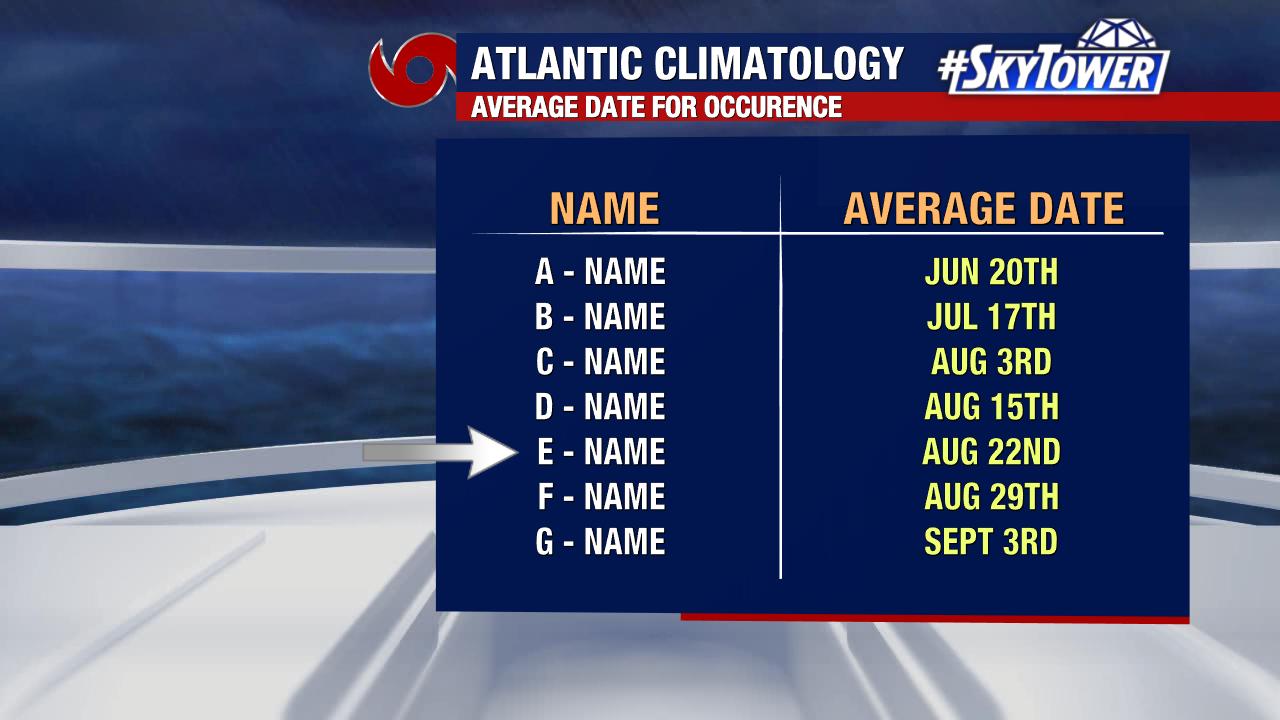
The main development region is also waking up. There’s a tropical wave in the eastern Atlantic that’s just below the plum of Saharan dust and has a decent chance to form.
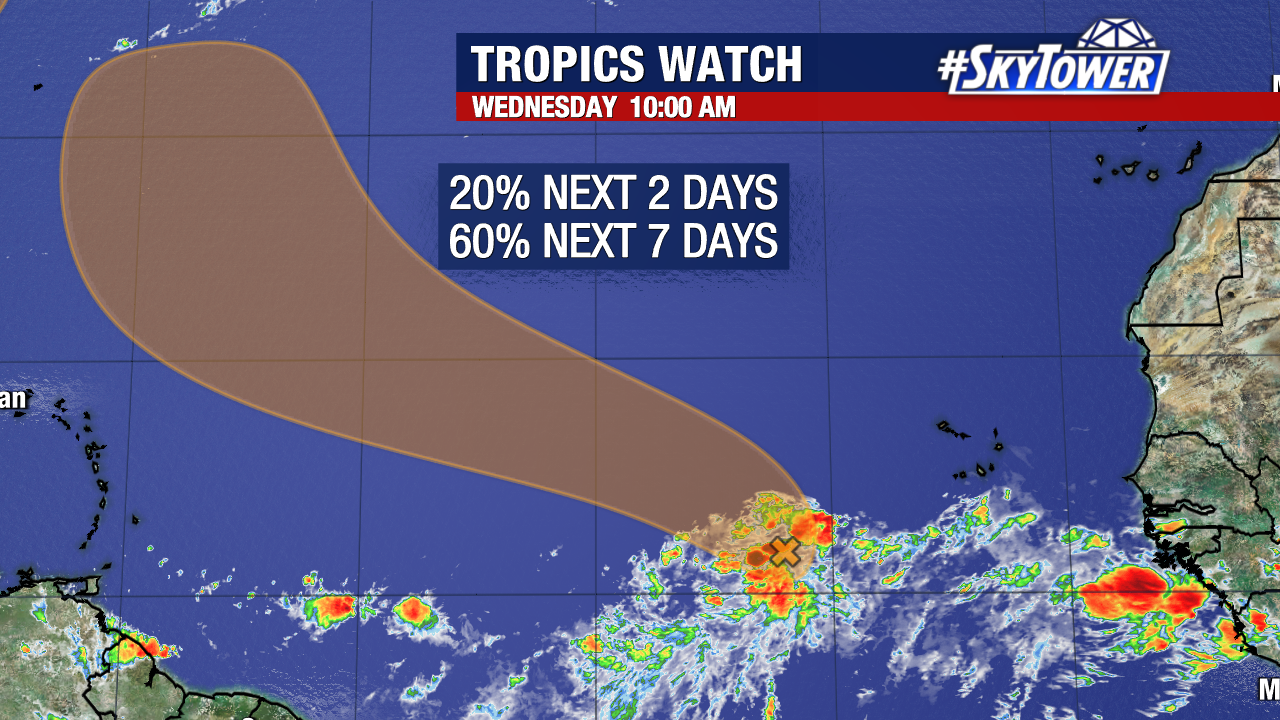
The NHC is giving it a 20% chance to form in the next 2 days and 60% chance to form in the next 7 days.
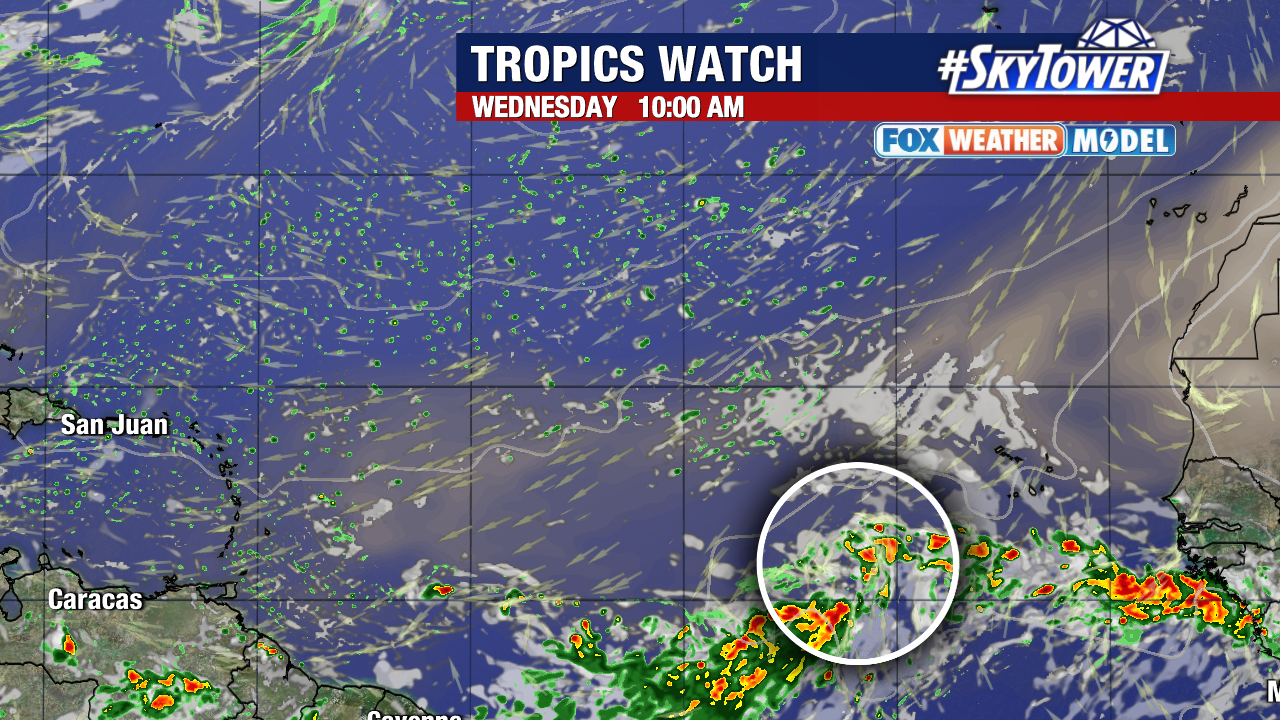
High pressure will be the main steering flow and the brunt of the models guide this area north the next few days. There are some models that take a westerly trend and this can’t be ruled out.
As the area gets more organized, we’ll have a better idea of how the steering pattern will evolve and what the most likely track will be.

There’s another wave on the heels of this area that will emerge off the coast of Africa and also garner watching next week and the following.
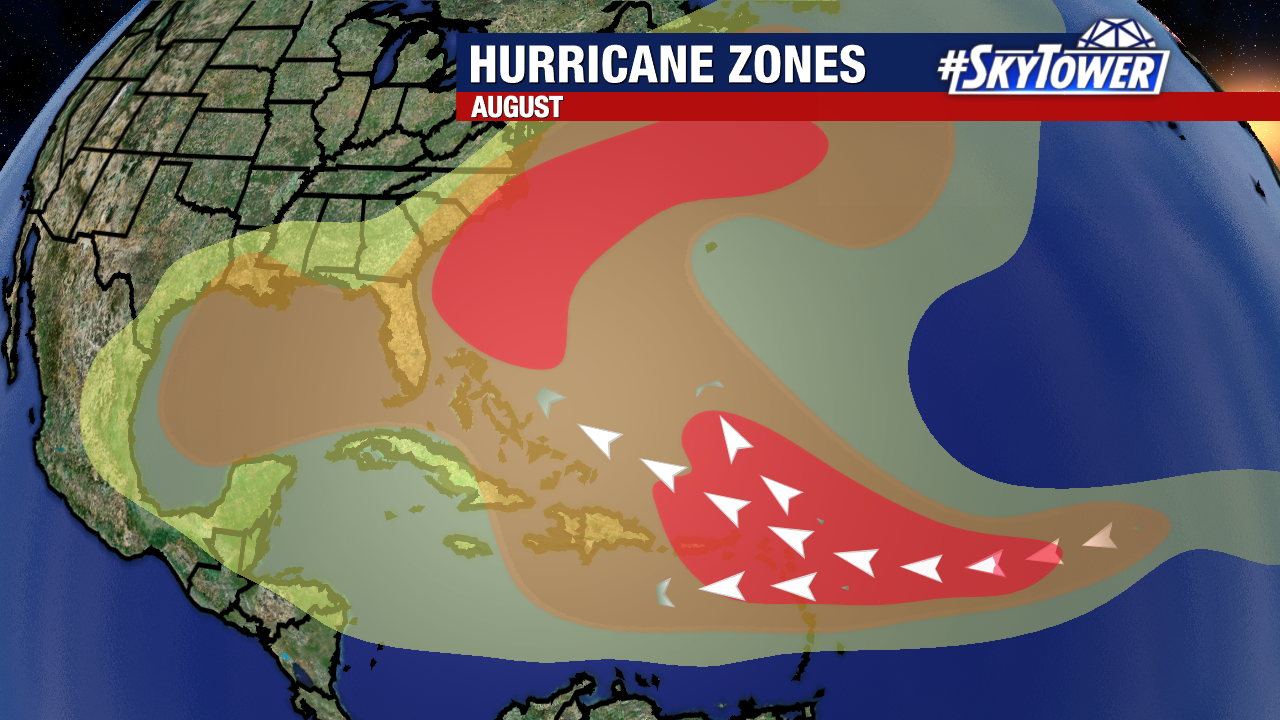
These are typical areas for tropical development at this point in the season as dust breaks down and water temps reach heat up even more through August.
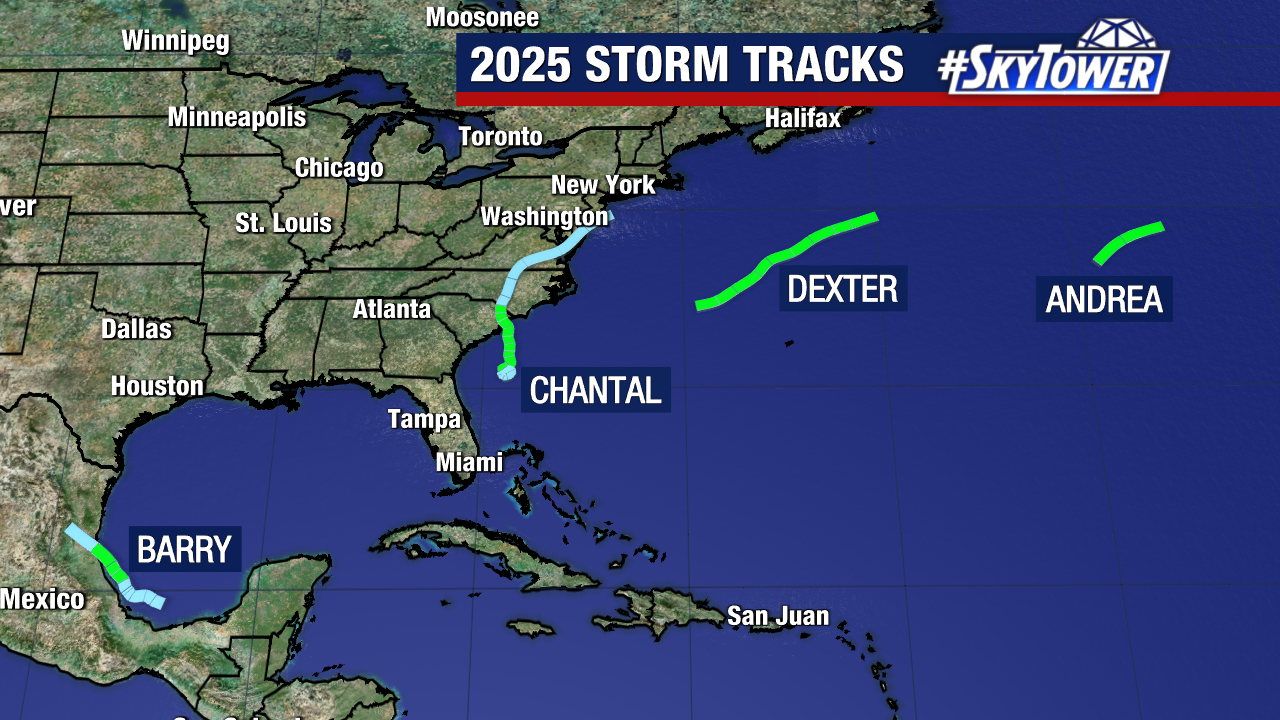
The graphic above shows the storms we’ve seen so far this season.

